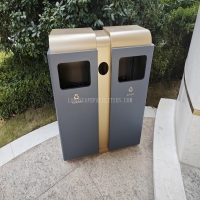Welcome to the website for landscape facilities products and knowledge.
What are the best thermal-reactive designs for cedar landscape sculpture?
Cedar, with its natural durability and aromatic appeal, is a favored material for landscape sculptures. When combined with thermal-reactive techniques, cedar art transforms into dynamic installations that respond to environmental changes. Here are the best thermal-reactive designs to elevate your outdoor space:
1. Heat-Activated Color Shifts
Certain pigments and stains react to temperature fluctuations, causing cedar sculptures to change hues with the seasons. Darker tones emerge in cold weather, while warmer months reveal vibrant shades.
2. Expansion-Contraction Textures
By carving cedar with precision, artists can create grooves that expand or contract with heat, producing evolving surface patterns. This technique adds movement to static pieces.
3. Thermal Warping Waves
Thin, layered cedar strips can be designed to warp slightly under direct sunlight, creating undulating effects that mimic natural motion.
4. Solar-Absorbing Metal Inlays
Embedding metals like copper or brass into cedar accelerates localized heat reactions, causing the wood to darken or lighten around the inlays for striking contrasts.
5. Moisture-Reactive Joints
Combining cedar with hygroscopic materials (e.g., bamboo) allows sculptures to shift shape with humidity, offering a dual thermal and moisture response.
These designs not only enhance visual interest but also deepen the connection between art and nature. Choose techniques that align with your climate for long-lasting impact.
Related search:

Recommendation
Double-bucket garbage bin, outdoor, metal, multi-color, powder-coated, double-bucket trash can